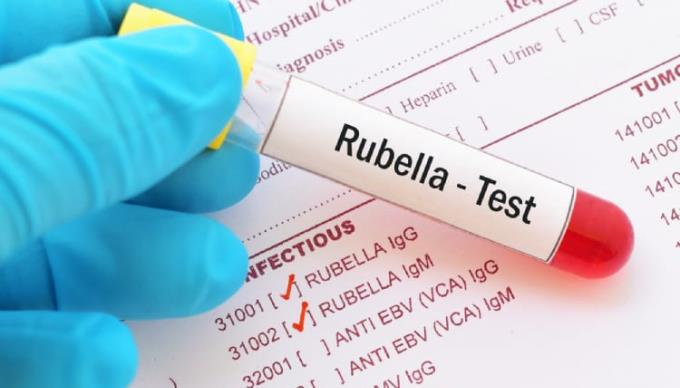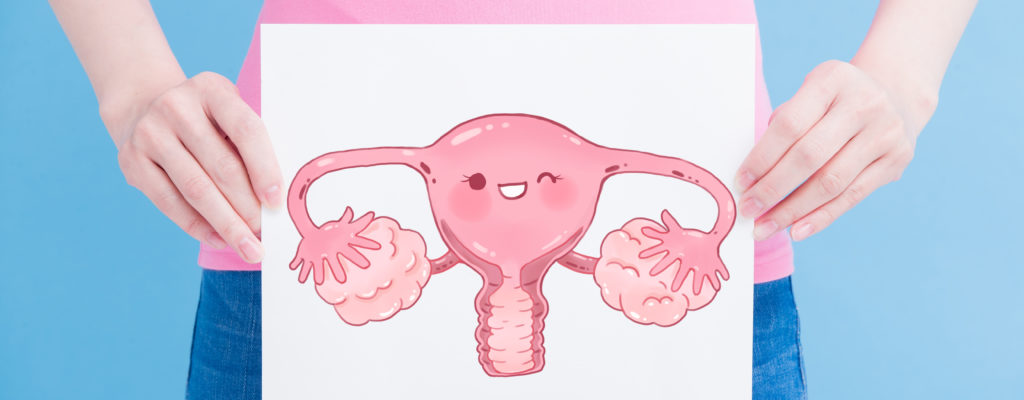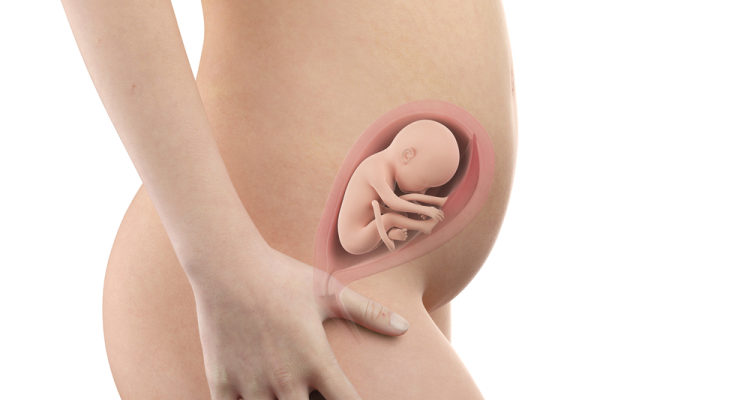Rubella infection during pregnancy is a concern of many pregnant women today. This is because the virus that causes the disease is known to be transmitted to the fetus through the bloodstream, and at the same time it makes the baby suffer from serious defects after birth.
Rubella, also known as German measles - is an infectious disease caused by the rubella virus that affects the skin and lymph nodes. The patient usually presents with a skin rash or mild fever.
It is worth mentioning that rubella pregnant women are the cause of birth defects such as heart defects, cataracts, congenital deafness, mental retardation ... Moreover, if rubella infection in the first 3 months of pregnancy , pregnant mothers can encounter obstetric complications such as miscarriage, stillbirth very dangerous.
This article, aFamilyToday Health will share with you all information about the causes of pregnant women pregnant with rubella, related complications and effective ways to prevent viral infections. Don't miss it, friends!
Complications of rubella infection during pregnancy
Infection with rubella virus during the first 20 weeks of pregnancy can lead to the following complications:
Miscarriage (fetal death before 20 weeks)
Stillbirth in the uterus (fetal death after 20 weeks)
Preterm birth (usually a baby born before 37 weeks gestation)
When the virus is passed from a mother to an unborn baby, it is called a baby with congenital rubella syndrome (CRS). CRS can lead to problems with vision (cataracts), heart disease, hearing (deafness) ... Sometimes babies will be born underweight , slow growth and mental retardation.
The severity of the above defects will depend on the gestational age of the virus. The risk of developing CRS in a baby is higher if the mother has rubella in the first 12 weeks and is lower after 20 weeks.
Where will the fetus develop congenital rubella syndrome?
According to statistics, the earlier the mother gets infected with rubella vius during pregnancy, the higher the risk of her baby getting this disease. This risk falls to about 90% if the mother is infected in the first 3 months of pregnancy.
In cases of rubella infection in the first 12 weeks of pregnancy, the fetus has an 85% risk of transmitting the virus. As a result, children can develop congenital rubella syndrome with many dangerous complications.
If the mother becomes ill between the first 13 to 20 weeks of pregnancy, the risk of her baby having CRS is lower.
Particularly if rubella infection after the first 20 weeks of pregnancy, there is likely to be no problem with the fetus.
From the above complications show that rubella infection during pregnancy is not to be underestimated. Therefore, pregnant mothers need to better understand the causes and ways to early identify the symptoms of this disease for timely medical intervention.
What is the pathway of rubella infection?
According to epidemiology, this disease is present all over the world, most commonly in winter - spring. The infected person is the only source of the disease. Accordingly, the virus will be spread through the air when an infected person coughs or sneezes . Healthy people, if accidentally exposed to these saliva droplets, will create conditions for the virus to enter the body.
Especially during pregnancy, the mother's body is more vulnerable than ever because the immune system has been weakened. Therefore, it is important to monitor for symptoms if someone around you has been found to have rubella infection.
Help pregnant mothers easily recognize rubella

In some cases, the disease will have no obvious symptoms. However, it was found to be almost identical to the common cold symptoms. At the same time, the rash is also observed to go away in 7 to 10 days.
Flu-like symptoms include:
Slightly high body temperature can rise around 38.5 ° C in a few days.
Runny or stuffy nose. The patient also feels sore throat and cough.
Eye swelling, inflammation, or redness accompanying watery eyes.
Swelling and pain in the lymph nodes can last more than a week, even after the rash disappears.
A pink or red rash appears first on the head, and the back gradually spreads throughout the body. These rashes last for three days and go away and are called measles 3 days. The rash may be round or oval in shape, about 1-2 mm in diameter, and grow in patches or individually, disjointly like measles.
Headache or aching muscles or joints.
In rare cases, the virus can lead to an ear infection or swelling, inflammation in the brain. Here is of primary concern and possible symptoms include:
Appear bout headaches constantly and can become worse over time
Persistent ear pain, causing hearing loss
Neck stiffness
If you find that you have rubella infection during pregnancy, you should immediately go to the hospital for immediate medical intervention.
Methods of diagnosing rubella infection during pregnancy
The only way to diagnose rubella infection during pregnancy is to perform a blood test. If you have been vaccinated, a blood test will help your doctor determine immunity to rubella based on the antibodies present in your body.
1. Serological test

The blood tests will help determine the amount of antibodies to rubella, ie, IgG and IgM, in your body. It is performed about 7 to 10 days after the onset of illness. At this point, the IgM antibodies in the blood are at their highest and then gradually decreased after a few weeks. So the blood test will be repeated after two to three weeks to confirm the antibody levels.
IgG antibodies will appear only after the IgM antibodies have shown their presence. Once the IgG antibodies appear, these antibodies can last for a lifetime.
Explanation of serological tests for rubella:
Rubella IgG negative: If the IgG antibody level is ≤ 10 IU / mL, it means the person has not been vaccinated against rubella or has not been exposed to this infection.
Rubella IgG positive: If the IgG antibody level is ≥ 10 IU / mL, that indicates a previous vaccination or infection.
Rubella IgM negative: If little or no IgM appears with a slight increase in IgG antibodies, it indicates a risk of reinfection.
Rubella IgM positive: If IgM antibodies (≥ 0.3IU / mL) appear with or without IgG antibodies it indicates a recent rubella infection.
2. Virus culture
Another test for the diagnosis of rubella is virus culture. It involves examining a sample of body fluids such as using a cotton swab from the throat or nose to detect the RNA of the rubella virus to confirm infection.
Treatments for rubella infection during pregnancy
Currently, there is no specific treatment for rubella and congenital rubella syndrome. However, its symptoms can still be well controlled. If you are pregnant with the disease and do not want to end the pregnancy, your doctor may give you an antibody called a super immunoglobulin.
Although the shot does not completely protect the fetus from infection, it may help to limit the risk of defects to some extent.
Rubella causes flu-like symptoms, so you need to take measures like pain relief, cool down, and stay out of the wind when you have a rash. Pregnant mothers should combine with eating enough nutrients to improve health.
Tell you how to prevent rubella infection during pregnancy effectively

The best way to prevent rubella is to get vaccinated before pregnancy. If you had the vaccine as a child, the risk of getting an infection is negligible.
If you are planning to become pregnant but are not sure if you will be vaccinated, you should see your doctor. Doctors may recommend a blood test to check for the antibodies in it.
However, if you haven't been vaccinated earlier, here are different scenarios to consider:
Before getting pregnant: Get MMR (measles, mumps and rubella) vaccine four weeks before getting pregnant.
During pregnancy : You should not get the vaccine. Therefore, pregnant mothers need:
Avoid close contact with people infected with rubella
Seek immediate medical attention if you come in contact with someone with rubella-like symptoms.
After pregnancy : Get vaccinated right after birth to prevent disease in future pregnancies.
In addition, you should also avoid traveling to places where rubella is epidemic. Also, don't use public toilets or go to crowded places where there is a higher chance of getting the virus.
Above is the most basic information about rubella infection during pregnancy that you need to know. Hopefully this article will be helpful and give you the knowledge you need to protect yourself and ensure a healthy pregnancy.














